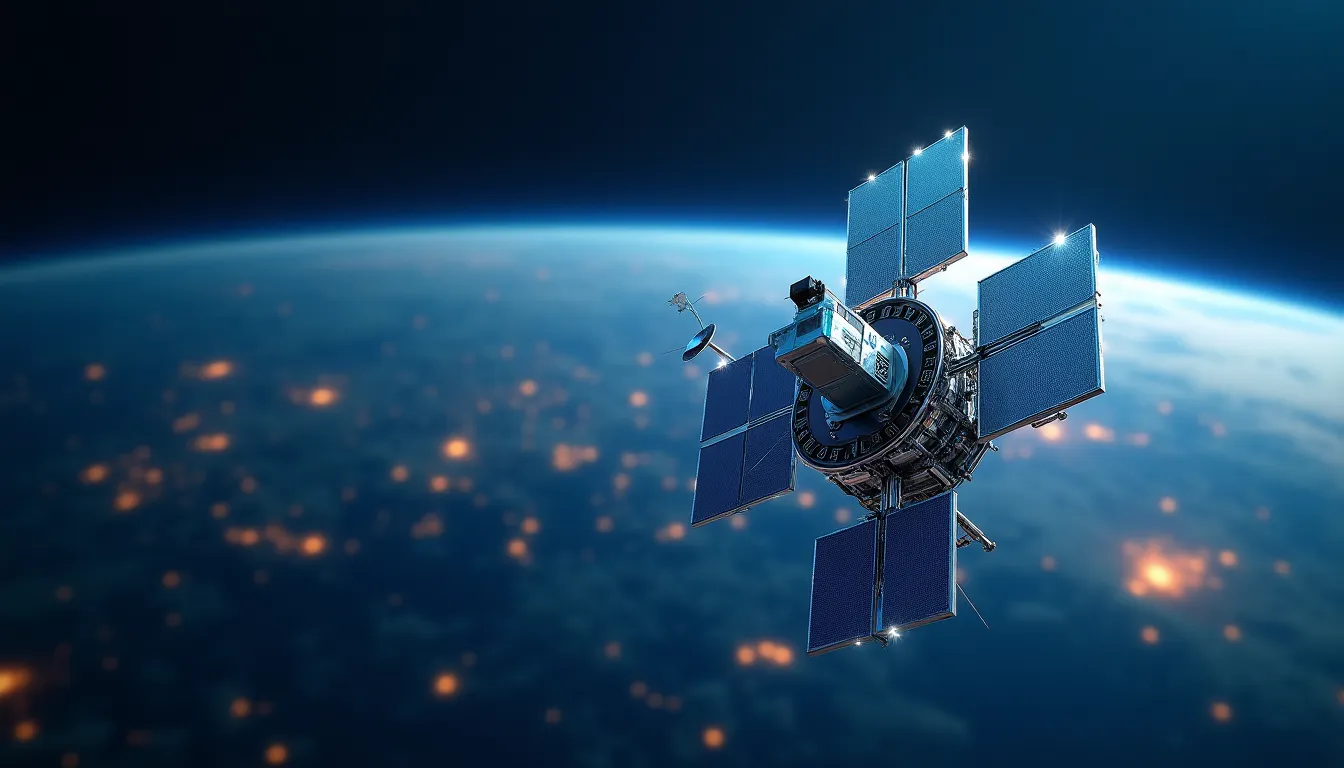The aerospace and defense sectors are witnessing significant advancements in satellite constellations, which play a critical role in enhancing global connectivity, monitoring the Earth’s environment, and providing specialized data services. Recent developments highlight the deployment of cutting-edge technologies that promise to transform how we communicate and understand our planet.
ViaSat-3 Flight 2: A Leap in Global Connectivity
Scheduled for launch in late October 2025, the ViaSat-3 Flight 2 satellite will be deployed aboard the United Launch Alliance (ULA) Atlas V rocket from Cape Canaveral Space Force Station, Florida. This satellite is part of a multi-orbit, multi-band constellation designed to revolutionize satellite communications.
The ViaSat-3 network aims to provide high-capacity communications by utilizing dynamic beam-forming technology. This innovative capability allows the satellite to shift bandwidth rapidly to areas with the highest demand. Positioned in geostationary orbit (GEO) approximately 22,000 miles above Earth, the satellite will enhance connectivity for both commercial and defense applications, ensuring resilient and secure global networks.
According to industry experts, “The ViaSat-3 constellation is set to transform global communications by providing unprecedented bandwidth and coverage, especially in underserved regions.” This capability is expected to support a range of applications, from broadband internet services to military communications.
ESA’s Swarm Constellation: Monitoring Earth’s Magnetic Field
The European Space Agency’s (ESA) Swarm satellite constellation, launched in 2013, continues to play a pivotal role in monitoring Earth’s magnetic field. As Earth’s magnetic environment directly impacts satellite operations, the Swarm constellation provides vital data that helps understand the dynamics of our planet’s magnetosphere.
Recent studies utilizing Swarm data have revealed concerning trends regarding the South Atlantic Anomaly (SAA), a weak spot in Earth’s magnetic field that has expanded significantly over the last decade. The SAA is particularly concerning for satellite operations, as it increases exposure to solar radiation, which can jeopardize the functionality of satellites traversing this region. With continuous measurements, the Swarm constellation is essential for informing strategies to mitigate risks to space assets.
Dr. Anne-Marie W. J. van der Wel, a researcher at ESA, stated, “Understanding the behavior of the South Atlantic Anomaly is critical for ensuring the safety and integrity of satellites. Our ongoing monitoring efforts allow us to provide timely warnings to satellite operators.”
AAC Clyde Space’s Sedna-1: Specialized Maritime Intelligence
In a noteworthy development within the small satellite sector, AAC Clyde Space has announced that its Sedna-1 satellite is now fully operational. This satellite is part of a growing trend toward deploying smaller constellations that focus on specialized data services, such as maritime domain awareness.
Sedna-1 delivers crucial maritime intelligence, providing real-time data that is vital for both defense and commercial applications. The operational status of this satellite reflects the industry’s shift towards more agile and responsive satellite systems capable of delivering high-value data.
The increasing deployment of small satellite constellations, like Sedna-1, illustrates a broader industry trend towards specialization, leveraging advanced technologies such as precision accelerometers and 9-DOF MEMS IMUs integrated into satellite systems for enhanced navigation and positioning capabilities.
The Future of Satellite Constellations
As the aerospace and defense industries continue to innovate, the future of satellite constellations looks promising. The integration of advanced technologies such as quartz MEMS gyroscopes and high-performance single-tube PIN quadrant detectors will further enhance the precision and reliability of these systems. These advancements will not only improve communication capabilities but also facilitate more effective Earth observation and environmental monitoring.
Industry analysts predict that the continued evolution of satellite constellations will lead to more robust global networks and improved data collection methods, ultimately benefiting a wide range of sectors from telecommunications to climate science.
Conclusion
The recent advancements in satellite constellations, marked by the upcoming launch of ViaSat-3 Flight 2, the ongoing monitoring efforts of ESA’s Swarm constellation, and the operational success of AAC Clyde Space’s Sedna-1, illustrate a transformative period in aerospace and defense. These developments underscore the critical role of satellite technology in enhancing global connectivity and safeguarding our understanding of Earth’s environment. As the industry moves forward, we can expect further innovations that will redefine our capabilities in communication and Earth monitoring.
References
-
ULA’s Atlas V ready to launch VIASAT-3 Flight 2 enhancing global connectivity (news.satnews.com) - 10/21/2025 The ViaSat-3 is scheduled to launch in the second half of October from Cape Canaveral Space Force Station, Florida, aboard a United Launch …
-
AAC Clyde Space’s Sedna-1 satellite now fully operational (www.aac-clyde.space) - 10/20/2025 AAC Clyde Space’s Sedna-1 satellite has successfully completed commissioning and is now delivering maritime intelligence data to customers.
-
A giant weak spot in Earth’s magnetic field is getting bigger — and it could be bad news for satellites (www.space.com) - 10/16/2025 Satellite data reveal that a weak region in Earth’s magnetic field has grown by an area roughly half the size of continental Europe in the …
-
What’s Up: October 2025 Skywatching Tips from NASA (science.nasa.gov) - 9/30/2025 A supermoon takes over the sky, the Draconid meteor shower peeks through, and the Orionid meteor shower shines bright.



